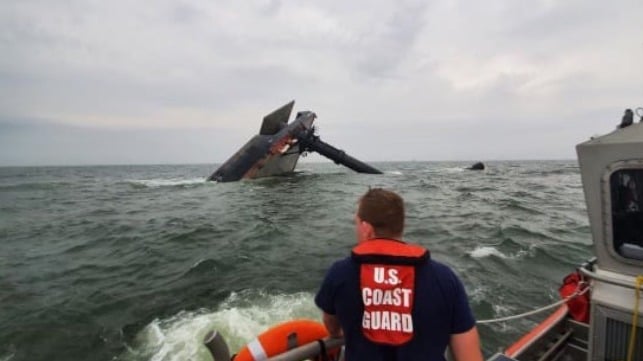Seacor Marine Sues to Limit Liability in Seacor Power Sinking

The operator of the capsized liftboat Seacor Power has filed a civil suit seeking to limit damages in connection with the vessel's loss on April 13. The firm faces civil suits from families of the 13 individuals who died or went missing in the sinking, as well as potential injury claims from the six survivors. If its petition is successful, any liability found by the court would be limited to the value of the vessel and its cargo - about $5.7 million.
According to oerator Seacor Marine, the weather report on the morning of the casualty voyage predicted conditions that were "well within the Seacor Power’s safe operating limits," and the master's decision to depart the berth was therefore reasonable and prudent. Several hours into the voyage, the weather worsened rapidly with "hurricane force winds," and the crew made an effort to lower the jackup's legs and turn into the wind. During that evolution, the vessel "was overcome by forces of nature" and capsized in a "force majeure event," Seacor asserted.
For the personal injury lawsuits brought on behalf of the victims, Seacor asked the court to consolidate cases in one venue and - if the court should find that Seacor is liable - to limit damages to the value of the firm's interest in the vessel. Seacor's insurer, Skuld, has provided a letter of undertaking for a total of about $5.7 million; if Seacor's petition is accepted and the firm is found liable, the claimants would split this amount between them. The cap is about one-fifth the amount sought in one of the suits, the $25 million damage claim brought by the spouse of missing crewmember Dylan Daspit.

that matters most
Get the latest maritime news delivered to your inbox daily.
The petition for limitation of liability is common in U.S. marine casualty cases, and it draws on the provisions of the Limitation of Liability Act of 1851 - a law originally intended to protect the U.S. merchant shipping industry. While it is procedurally challenging to invoke, according to maritime law firm CSK, "the opportunity of limiting a vessel owner’s liability to the value of their vessel can serve as a powerful defense to claims stemming from personal injury or death."
Salvors are preparing to refloat the Seacor Power and bring it back to shore. Debunkering operations conducted last month successfully extracted more than 20,000 gallons of distillate fuel from her tanks. Though she still has about 4,500 gallons of hydraulic fluid on board, it is believed to be safely contained. Dive teams have been preparing the vessel for a safe refloat attempt; while the work proceeds, the Coast Guard has set up a one-mile safety zone and is encouraging all marine traffic to stay well clear.
